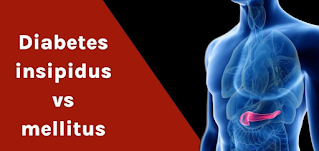Structure and Function of Blood
Composition of Blood
Their are 4 fundamental components of blood that are crucial for maintainig general life balance,,
These are:
The mammalian blood is made up of a fluid medium called plasma with substances dissolved in it.Cellular components suspended in plasma include;erythrocytes (red blood cells),leucocytes (white blood cells)thrombocytes (platelets)blood proteins.
Plasma
This is a pale yellow fluid consisting of 90% water.There are dissolved substances which include;glucose, amino acids, lipids, salts,hormones, urea, fibrinogen, albumen,antibodies, some enzymes suspended cells.Serum is blood from which fibrinogen and cells have been removed.The functions of plasma include:
Transport of red blood cells which carry oxygen.Transport dissolved food substances round the body.Transport metabolic wastes like nitrogenous wastes and carbon (IV) oxide in solution about 85% of the carbon (IV) oxide is carried in form of hydrogen carbonates.Transport hormones from sites of production to target organs.Regulation of pH of body fluids.Distributes heat round the body hence regulate body temperature.Erythrocytes (Red Blood Cells)
In humans these cells are circular biconcave discs without nuclei.Absence of nucleus leaves room for more haemoglobin to be packed in the cell to enable it to carry more oxygen.Haemoglobin contained in red blood cells is responsible for the transport of oxygen.Haemoglobin + Oxygen =oxyhaemoglobin(Hb) + (4O2) __ (HbOg)Oxygen is carried in form of oxyhaemoglobin.Haemoglobin readily picks up oxygen in the lungs where concentration of oxygen is high.In the tissues, the oxyhaemoglobin breaks down (dissociates) easily into haemoglobin and oxygen.Oxygen diffuses out of the red blood cells into the tissues.Haemoglobin is then free to pick up more oxygen molecules.The biconcave shape increases their surface area over which gaseous exchange takes place.Due to their ability, they are able to change their shape to enable themselves squeeze inside the narrow capillaries.There are about five million red blood cells per cu bic millimetre of blood.They are made in the bone marrow of the short bones like sternum, ribs and vertebrae.In the embryo they are made in the liver and spleen.Erythrocytes have a life span of about three to four months after which they are destroyed in the liver and spleen.Also in the red blood cells is carbonic anhydrase which assists in the transport of carbon (IV) oxide.Leucocytes (White Blood Cells)
These white blood cells have a nucleus. They are divided into two:- Granulocytes (also phagocytes or polymorphs) - Agranulocytes .
White blood cells defend the body against disease.Neutrophils form 70% of the granulocytes.Others are eosinophils and basophils.About 24% agronulocytes are called lymphocytes, while 4% agranulocytes are monocytes.The leucocytes are capable of amoebic movement.They squeeze between the cells of the capillary wall to enter the intercellular spaces.They engulf and digest disease causing organisms (pathogens) by phagocytosis.Some white blood cells may die in the process of phagocytosis.The dead phagocytes, dead organisms and damaged tissues form pus.Lymphocytes produce antibodies which inactivate antigens.plateletsplatelets plays a fundamental part in clothing of blood.




Comments
Post a Comment